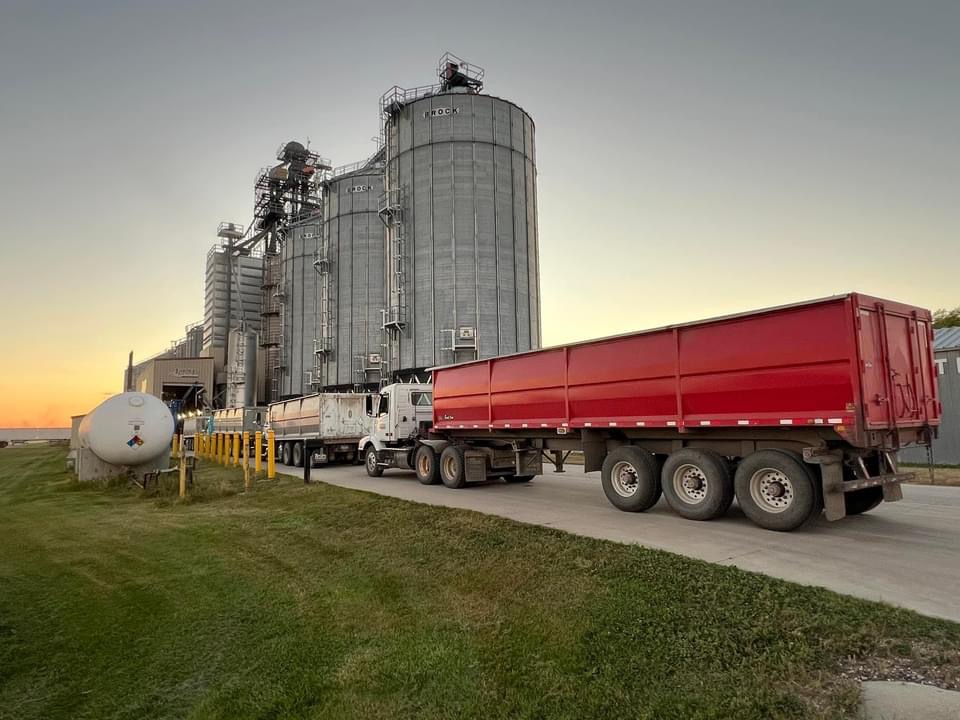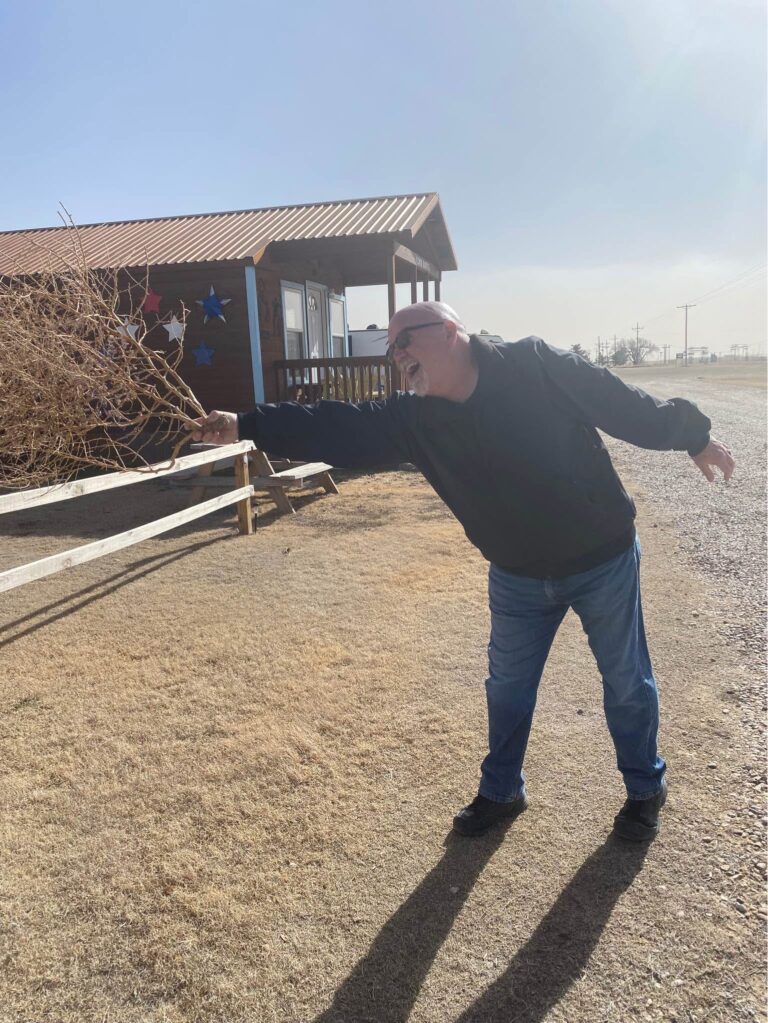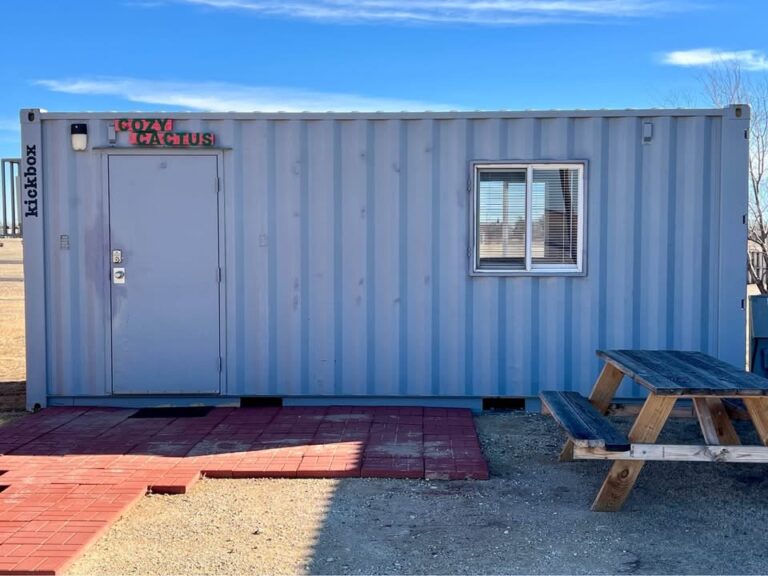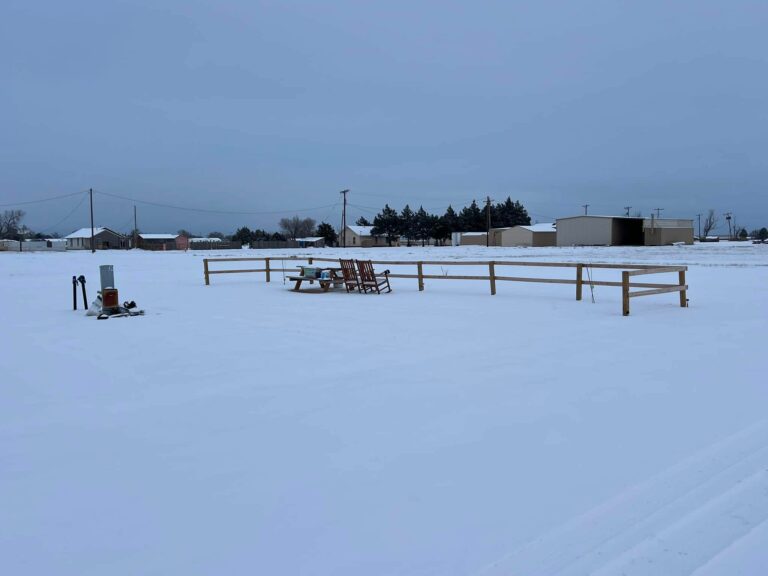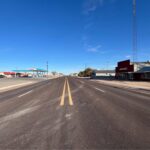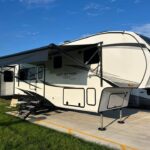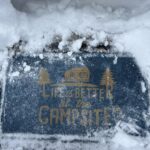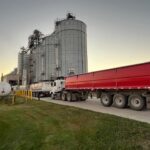“Well, Congratulations! You’ve just completed your first harvest from beginning to end!” This was said to Ken by one of the farm managers (T- I’m not sure what to call your position!). Ken was able to be a part of the soybean harvest from beginning to end.
Our time here in Fisher, MN continues to be a crash course in farming lessons, long days, incredible experiences, and life-long learning!
Since our last post we have been busy:
Chris has been driving the John Deere 9620 plowing harvested wheat fields with Tatu, a speed-disc plow. Chris has plowed nine fields, so far! In the pics below, she set up a “Map My Walk” for one field. The picture and data are fun to see!
Ken was taught how to deliver harvested soybeans to the local grain elevator. Since his first training run, he has made 36 round-trip deliveries! Most of the trips were made pulling a 34’ “end-dump” trailer. Then, just a couple of days ago, he was asked if he wanted to pull the (brand new) 40’ Timpte “hopper-bottom” trailer! So fun and cool (and to be honest, a little stressful)!!!
The process for the soybean harvest is interesting. In an 80 acre parcel of land, two John Deere Combines will work opposite of each other. Once the headlands (rows of crop near the approach (entry) to the field) are clear, a John Deere Track tractor pulling a grain cart will enter and begin to off-load the harvested soybeans from the combines. Then, three semi-trucks will enter the field and begin to have their trailers filled with the soybeans from the grain cart. Once a semi and trailer are full it will leave the field and head to the local grain elevator to deliver the grain. Then the process starts all over again. The idea of having three trucks in rotation is so that the combines never have to stop harvesting.
Tonight at midnight the 24/7 sugar beet harvest begins. All of the fields have been “opened” meaning that they have had several rows of beets harvested so that “stockpile” harvest can start without having to make room in the fields for all the equipment. The shifts run for twelve hours; either midnight to noon, or noon to midnight. We are on the noon to midnight shift. If the weather cooperates, we should have the harvest completed in 10-14 days, maybe less if there are no shutdowns due to temperatures. Chris has been asked if she would continue plowing, and remain available as a truck driver if needed. Ken will be driving a beet truck for the whole time.
We have been battling the Minnesota State Bird, commonly known as FLIES, as well as ladybugs!!! We literally kill over 100 of each of them every day, INSIDE the RV!!! There is a pic below that is not for the faint of heart!
On our last day off, Ken launched the drone. He was able to get some really neat shots of our site and the surrounding area.
Please be sure to check out the photos below. We have captions for each photo.
Several people have asked why we are working so much when we are “retired”. We need to be clear…we are “quit-ired”!! Remember, we left our careers as a nurse and a teacher to live life more purposefully! We still need to work. Our biggest expense each month is health insurance. Some day, a few months from now, we will be able to report how our full-time RV living budget compares to our expenses! IF you know Ken, you know how analytical and OCD he is! Every penny of expense and income is accounted for. It is mostly Chris who does all the data entry. Until then, thanks for following along and enjoy our story.
If you’ve read to his point, will you please comment on what you find most interesting about this work-camping job so far?

This is a drone shot of our “home” site! That lane is 1/2 mile long from the RV site to the main road.

Some days we work from sunrise to sunset. Both are unbelievably beautiful! We often stop what we are doing for just a minute to view God’s gift to us!

The foreground is a harvested soybean row and the background is yet to be harvested. Harvesting soybeans is VERY dusty work!

Here, Ken is getting loaded with soybeans from the grain cart.

During the busy days of soybean harvest, there could be as many as 10 trucks in line at the grain elevator.

This is the picture of the hopper-bottom trailer getting loaded from the grain cart.

This truck is about to have it’s soybeans “sampled.

This “vacuum boom” will suck a sample of soybeans from three different parts of the trailer. The beans are funneled into the elevator office where the worker mixes them up and puts them into a machine that will determine the moisture content of the beans. If the moisture is above 13% the farmer will be “docked” value for the beans.

Another beautiful Minnesota sunset.

Sunset is near, at the elevator. This is Ken’s truck in line to dump.

A photo taken by another farm worker. This is Ken returning to the truck yard at the end of the day.

Night, night!

Chris is fueling up the John Deere 9620. Rather than drive the tractors back to the shop where the giant diesel tank is, we fill a 150-gallon portable tank on the back of one of the service trucks and drive the service truck to the equipment in the field.

Chris is checking the oil level and the hydraulic fluid level before starting her day on the 9620.

One of the John Deere combines at work harvesting soybeans.

This is what the inside of the trailer looks like after getting filled by the grain cart.

Time for lunch! Or, it may be dinner! May as well eat while waiting in line at the elevator.

This combine is full, about to start a new row and the grain cart will pull up next to it to receive the hopper of beans.

Almost sunset at the elevator.

The grain elevator is in Eldred, MN.

One day, while plowing, Chris noticed that one of the discs has sheered off. So, because having a 18″ steel disc laying randomly in a field is a hazard to the next planting/harvesting season, she went looking for the disc on this John Deere Gator. No…she didn’t find the disc. Fingers crossed that someone finds it next year, before any equipment damage happens.

Chris with her Tatu Speed-Disc plow. She is about to refuel for another day.

A random pic of our grandson, Henry. He is on an airplane traveling to visit some of his family in Illinois. In this pic, he is reviewing the “Emergency Procedures” brochure (up-side down)!!!

The day is done, but not this field. Ken snapped this pic as he was picking up Chris from the field she was plowing.

These soybeans have dried out in the field and are about to be harvested.

A sample of what soybeans look like and their size compared to coins.

This truck carries about 50,000 pounds of soybeans. The employees at the grain elevator use a kiddie pool with spaces cut out in the bottom of it to help contain the onslaught of beans as they are dumped from the truck. The beans go through the slots on the floor (also the scale) to a conveyor belt below and then into storage bins.

This is the Timpte 40′ Hopper bottom truck that Ken got to drive!!!

This was just a funny moment. As Ken was approaching a new soybean field, he had to wait for the combines to enter first. So, he stopped on the road. This herd of cattle was clearly very interested in knowing why a truck was stopping by them. Hmmm, maybe they’ve heard about hamburger trucks!

Sunrise over the fleet.

To try to battle against the lady bugs and flies, we added steel wool to all gaps and openings all around the RV. This is under the bathroom sink.

We have these water sensors that alarm REALLY LOUDLY if the sensors on the bottom get wet. We have them in the water bay, beneath the water pump, under all the sinks and even between the roof and the ceiling.

Just one of the hundreds of flies we have helped move on to the next life! Does anyone know what type of fly this is?

Just like when we had a sticks & bricks home…We won’t turn on the furnace! The top number, on the left, is the outside air temperature, the middle one is the water bay temperature and the bottom is the living room temperature!! Haha! The numbers on the right side are the humidity levels in each of these places.

Sunset behind the chisel plow.

One of our tools we use to combat the flies and ladybugs! We feel like the guys from the movie Ghost Busters!!

This discovery almost made us late for work! This morning the weather forecast was calling for sustained winds of 20-25 MPH with gusts up to 50 MPH, so we decided to pull the slide-outs in to help prevent damage to the slideout toppers. In order to retract the office slideout, we have to fold up an area run that overlaps the slide box carpet. Aye, yi, yi!!! When we got home from work, we stuffed the corners of the slide box with steel wool!

Ladybug graveyard!

This is one of the fields that Chris was plowing. She used “Map My Walk” as she drove the tractor and speed-disc plow back and forth!

Chris snapped this screenshot of Ken at one of the sugar beet piling stations.

Chris had to navigate a GIANT John Deere tractor and folded up speed-disc plow through this opening between two fields.

Chris and her office!

This device was designed by one of the farm owners. It is in each of the sugar beet trucks. It tells the truck driver which direction to go so that the beet “lifter” can properly fill the truck box. The one light you don’t want to light up is the “ALERT” light. It even alarms! This would mean you need to STOP as are probably close to running into the lifter.
